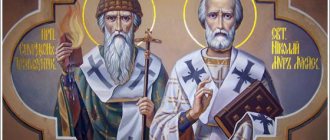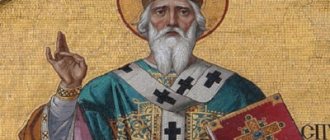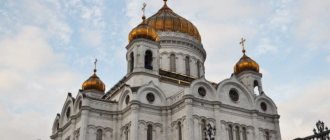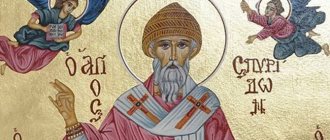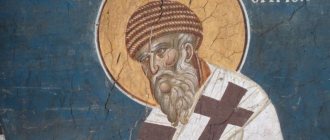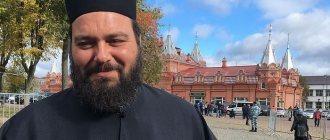The popularity of the Greek island of Corfu among tourists is difficult to overestimate. Beautiful beaches, lush hillsides and amazing sights lure many to this piece of paradise. However, there is a separate category of travelers who go to the island for its main shrine. The most important religious landmark of Corfu is the Cathedral of St. Spyridon. Within its walls are kept the relics of the saint, to whom every Orthodox person considers it his duty to venerate. Many believe that when they turn to him in prayer, miracles happen.
Temple life
The Church of St. Spyridon in Corfu is open to visitors at any time of the day, so that everyone who suffers can pray, as well as mentally turn to the holy wonderworker and patron saint of the heavens of Corfu. Four times a year, holy relics are opened and taken out of the temple for the procession of the Cross (litany). This is done according to the Orthodox calendar on the following dates:
- Palm Sunday holiday;
- day of Holy Saturday;
- 11th August;
- first Sunday in November.
These days, the never-empty temple is surrounded by crowds of pilgrims. They want to witness the ceremony with their own eyes and become part of it.
During his lifetime, Saint Spyridon was very sympathetic to the suffering, especially the poor. After his death, he began to patronize everyone and contribute in every possible way to those who prayed to him. In illness and poverty, believers call on Saint Spyridon, and he responds to their prayers, helping and calming their troubled hearts.
Biography of a saint
The future saint was born not so far from his current location. In the village of Askia, which belongs to the Trimifuntou (Trimitus) region of the island of Cyprus. This happened at the end of the 3rd century, in 270. Information about his parents and family has not been preserved; it is only known that Spiridon was from a poor family and was considered a very obedient and pious young man. He loved spending time in the pasture with the sheep and goats.
When the time came, he married an honest maiden, but their happiness did not last long. After the birth of their first child (daughter Irina), the wife died, and Spiridon raised the child on his own. He led a very pious lifestyle, many priests of that time admired him in their notes.
A few years later, the Trimifunt Christians turned to Spyridon with a proposal to become their bishop and received consent. In his honorary position, the saint continued to lead his former life: herding sheep, cultivating the land and helping those in need. The Lord turned his gaze to his humble servant, he rewarded him with miraculous power and the gift of foresight. Now God was more sensitive to his prayers. Spiridon spent the rest of his life going about his daily affairs in good health and died at a very old age.
Miraculous power
Over the long years of his life, St. Spyridon performed many miracles, which many believers have heard about. The most striking examples include the following:
- One day Bishop Spyridon went to meet Emperor Constantine at the Council of Nicea. On the way, he stopped for the night in a small village. There was a large group of Arian adherents there. They decided to stop the bishop and beheaded the horses. Having discovered the dead bodies in the morning, Spiridon ordered the coachman to put the heads to the bodies and began to pray. Soon the horses came to life and he was able to continue on his way.
- Upon arrival at the cathedral, the bishop amazed everyone once again. He picked up a baked clay brick. The fire from it entered the body of the miracle worker, and the water flowed out onto the ground, leaving only soft clay. He explained that the brick represents the unity of three components (clay, water and fire), and likewise the Holy Trinity consists of the Holy Spirit, God and the Son.
Prayer to Saint Spyridon of Trimifuntsky
Oh, all-blessed Saint Spyridon, great saint of Christ and glorious miracle worker!
Stand in Heaven before the Throne of God with the face of an Angel, look with your merciful eye at the people standing here and asking for your strong help. Pray to the compassion of God, the Lover of Mankind, not to judge us according to our iniquities, but to deal with us according to His mercy!
Ask us from Christ and our God for a peaceful and serene life, mental and physical health, earthly prosperity and all abundance and prosperity in everything, and may we not turn the good things given to us from the generous God into evil, but into His glory and the glorification of your intercession !
Deliver all who come to God through undoubted faith from all spiritual and physical troubles. from all yearnings and devilish slander! Be a comforter to the sad, a physician to the sick, a helper in times of adversity, a protector to the naked, a protector to widows, a protector to the orphans, a nourisher to the baby, a strengthener to the old, a guide to the wandering, a sailing helmsman, and intercede to all those who require your strong help, even useful for salvation!
For if we are guided and observed by your prayers, we will reach eternal rest and together with you we will glorify God, glorified in the Trinity of Saints, the Father and the Son and the Holy Spirit, now and ever and unto ages of ages. Amen.
Troparion
At the first council, you appeared as a champion and wonderworker, God-bearing Spyridon, Our Father. In the same way, you cried out to the dead in the tomb, and you turned the serpent into gold: and whenever you sang holy prayers, you had the most sacred angels serving you. Glory to him who gave you strength, glory to him who crowned you, glory to him who heals you all.
Kontakion
Having been wounded by the love of Christ, the most sacred one, having fixed your mind on the dawn of the Spirit, by your diligent vision you have found an act more pleasing to God, having become a divine altar, asking for divine radiance to all.
Saint Spyridon in defense of Corfu
After the death of the saint, his body remained incorrupt, which his followers considered another miracle and preserved the remains. For almost eight centuries they were in the native monastery of Spyridon in Trimifunt. Then they were transported to Constantinople, where they remained until the middle of the 15th century. With the fall of the latter, the secret order took the relics to the island of Corfu, to the city of Kerkyra. A few years later, the Cathedral named after St. Spyridon was rebuilt here. Since then, the imperishable remains of the miracle worker have been kept in the temple and protected by beautiful Corfu.
Residents are sure that only the patronage of the saint saved the island from the Turkish yoke. The religious procession on August 11 is dedicated to the great posthumous miracle of saving the island from enslavement. Seeing the armadas off their shores, the inhabitants of Corfu united in a single prayer to the miracle worker, and he heard them. An unprecedented storm struck off the coast of Kerkyra and blocked the Ottoman fleet. The lands remained unconquered for the Ottomans, because they were unable to land on the shore.
During World War II, the Nazis dropped an aerial bomb near the temple, but it exploded high above it. So the miracle worker preserved his monastery even after death.
Anyone can visit the cathedral whenever it is convenient for them. As in any other place, services and sacraments are held here. If fate has given you the chance to visit the island of Corfu, you should not refuse the opportunity to venerate the relics of St. Spyridon and pray for the well-being of loved ones.
How to get there by car, public transport
After landing the plane at the airport, you need to get to Kerkyra. Then from the bus station you should take a bus to the Afeteria Leoforion stop. A short walk will lead you to Miltiadi Margariti street, where the entrance to the cathedral is located.
There is a ferry service to Corfu from Central and Northern Greece. To do this you need to get to the port of Igoumenitsa. You can also transport a car to the island, the cost of which will cost 40 euros. Ticket price for passengers is 11 euros.
The monastery of the saint
The modern Cathedral of St. Spyridon is located in the center of Kerkyra, the capital of Fr. Corfu. It was built in 1590; before that, the temple was located in the Sarocco region. During the construction of the fortress walls around the city, the building had to be demolished and the relics transferred to a new building. The cathedral features a characteristic Ionic style, which is not as strict as most Catholic churches.
For several centuries, the harvest has been the richest throughout Greece. Numerous pilgrims (Orthodox and Catholics) left considerable donations: gold chandeliers and icon frames, marble iconostasis and silver decoration still delight parishioners.
The building is distinguished by low vaults and a prominent belfry. This reflected Italian trends of the late 17th century. The ceiling resembles a firmament; a carved iconostasis rises almost close to it. The painting of the vault was carried out by Payotis Dixaras in 1727.
Near the shrine with relics, various figures hang from the ceiling on chains. You can find small boats, cars and even individual body parts. This is how parishioners express their gratitude for the fulfillment of requests.
Architect and exterior decoration of the cathedral
The Cathedral of Saint Spyridon Kerkyra is an example of monuments of the post-Byzantine era. The architecture of the temple is made according to the canons of temple architecture of the Ionian Islands. This architectural type is presented in the form of a single-nave basilica with a tiled covering.
Building dimensions:
- internal length - 20.2, and with the altar and vestibule - 35.2 m;
- width – 9.6 m;
- height – 10.5 m.
The bell tower in the form of a snow-white tower with a red dome and a clock rises 42 m high. In appearance, it differs little from the bell tower of St. George's Church in Venice. The marble iconostasis was built in 1864 by the architect M. Mowers. The icons were made by local artist Spyridon Prosalentis.
Relics of St. Spyridon
A carved shrine has been prepared for the incorruptible relics of St. Spyridon, which is opened on holidays by two priests. On those days when the shrine doors are closed, ministers like to say that the saint is not in his “house”, for he is helping those in need.
The bishop has shoes on his feet. They are changed periodically as they miraculously wear out. When opening the shrine, the priests must change the shoes, and the remains of the worn-out ones are divided into small parts and distributed to the suffering.
People turn to him in prayer in search of financial well-being, consolation or health. Icons in the shop can be bought for 2-50 euros, depending on the size and quality. The ministers will receive them for consecration. An envelope with pieces of shoes can be obtained for free from the priest, but you need to ask for it.
Service schedule, operating hours
Services in the Church of St. Spyridon are held from 8.15 to 9.30. On holidays and Sundays the service ends at 10.30. There are special times set for the opening of the tomb with the relics of the saint - in the morning, at 10 o'clock and in the evening, at about 17 o'clock, and also when groups of believers come to the temple. The shrine containing the remains is opened by two clergymen, using different keys.
Often the cancer cannot be opened: in such cases they say that Saint Spyridon went to help the suffering. As proof of this, his velvet shoes are shown, which miraculously become worn out.
The clergy replace them with new ones, and cut the worn ones into small pieces (filahto). Believers can purchase such pieces in a shop inside the temple for a small price.
